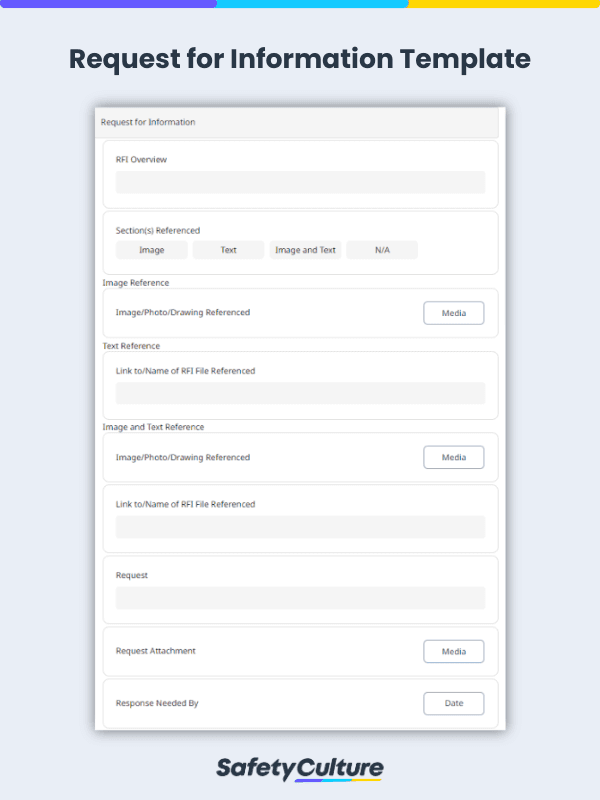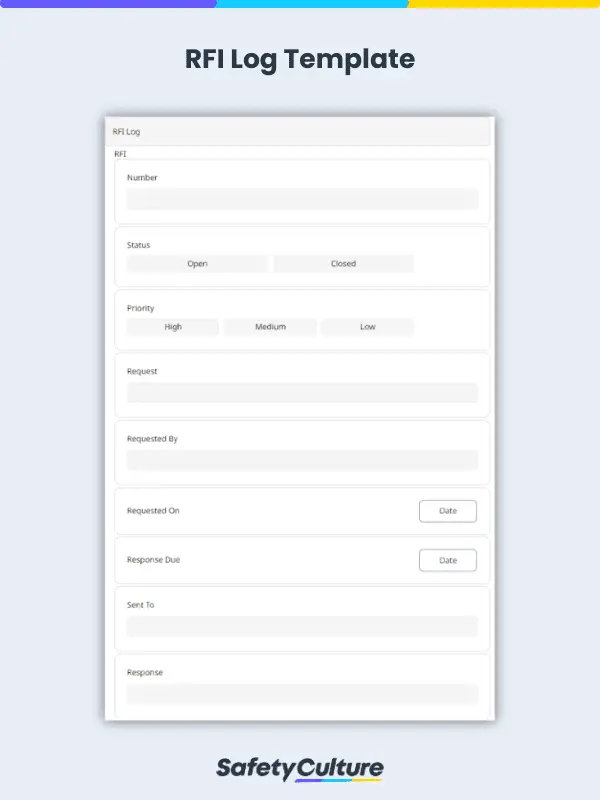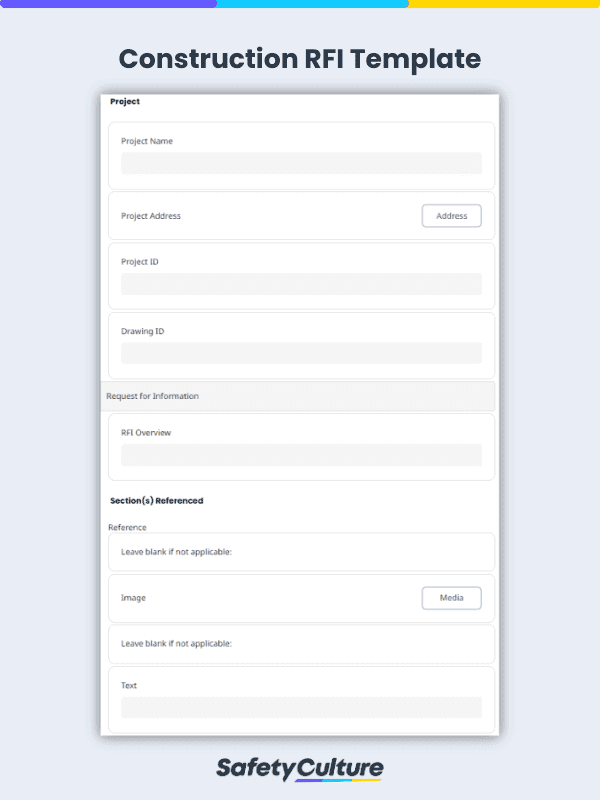What is an RFI Template?
An RFI template is a tool used in construction to request information from project stakeholders, especially during the procurement stage. The contractor can use the request for information template as a guide to writing an RFI. It can also help the company document the RFI response and track the RFI process from start to end.
RFI Format
The basic RFI format includes the following items:
- RFI Number
- Date of Request
- Response Due Date/ Due Dates
- Requesting Party
- Responding Party
- Section(s) Referenced
- Request/Question
- Response to RFI
- Date of Response
RFI Examples
Sample RFI Questions
Ask the following questions in an RFI:
- What [specification] do you use for [part of service]?
- When was the [previous work, part of building, etc.] completed?
- Why does the [document 1] state that [description 1] when in [document 2] it states that [description 2 contradicting description 1]?
- Where in the [building, construction site, etc.] will the [structure, fixture, etc.] be placed? Please highlight the specific location in the attached drawing.
- Who do we refer to for [health and safety issues, building permits, etc.]?
- How will the [stakeholder] perform [specific work]? This information is needed for [reason why or purpose of asking the question]. If possible, please include the [stakeholder]’s step-by-step process in the RFI response.
RFI Log Template
Construction RFI Template
How to Write an RFI
How to write a request for information in 4 steps:
-
Specify exactly what you need to know
When writing an RFI, it’s good practice to only ask one question, so that the responding party can focus on answering that question. Once you have identified the question you want to ask (which can be about an issue you’ve identified, a problem that needs solving, or a point for clarification), ensure that you formulate the question as accurately and as comprehensively as possible.
The responding party should immediately know what the request is about, what information or solution they need to provide, and critical details that could help them give a sufficient answer to the question.
-
Include your specifications and references
Specifications and references are important, not only to help the responding party answer the question, but also to help your organization in understanding how documents and information relate to one another. For example, if the RFIs for a particular problem always include a certain set of specifications, then the company may be able to require those specifications at an earlier stage so that the problem is, more or less, prevented.
-
Determine when a RFI response is needed
Before you choose the response due date when issuing an RFI, take note of the following: a) when you are likely to send the request; b) when the responding party is likely to receive the request; and c) the complexity and breadth of information required by the request.
While it is the responsibility of the responding party to submit the RFI response on time, you should still be mindful of the time required to collect, analyze, and describe the information requested. For example, perhaps the responding party needs information from another stakeholder or can only obtain information at a certain date. Whichever the case, giving adequate time helps you not only maintain a good relationship with the responding party, but also get a sufficient answer to your query.
-
Add fields for document management
Fields such as RFI number, project ID, and date of request can help you track and find your RFIs easily. Since these items should be included in every RFI, it’s better that you use an RFI template so that you don’t have to manually duplicate these items each time you make a request for information. Using an RFI template also ensures that you follow the basic RFI format whenever you write RFIs.




